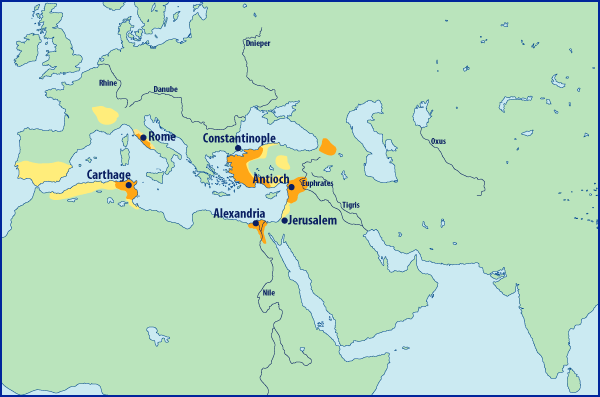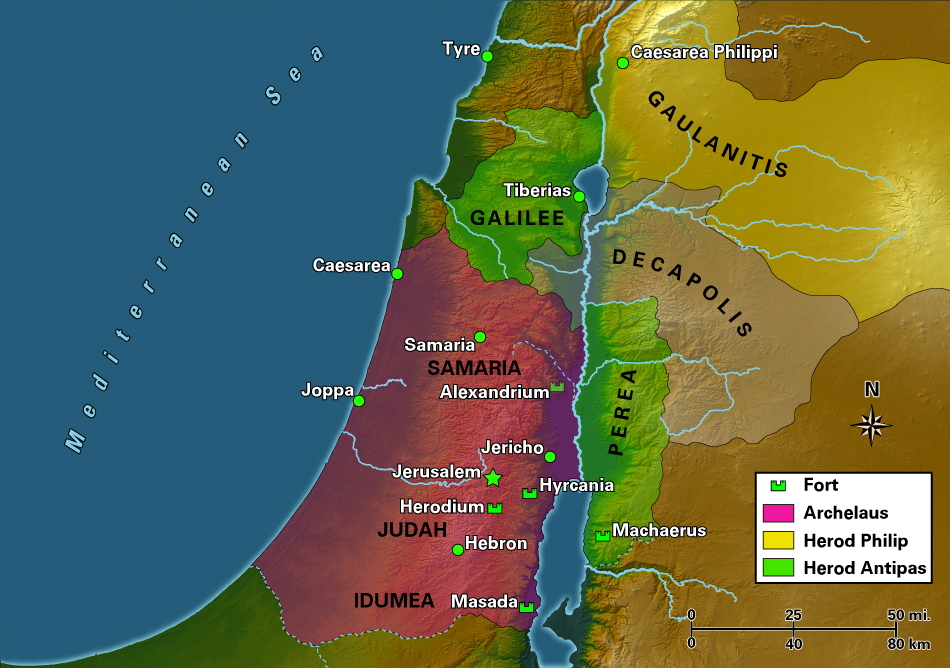Barnabas and Saul Sent Off
Acts 12:25-3:3
When Barnabas and Saul had finished their mission, they returned from Jerusalem, taking with them John, also called Mark.
Now in the church at Antioch there were prophets and teachers: Barnabas, Simeon called Niger, Lucius of Cyrene, Manaen (who had been brought up with Herod the tetrarch) and Saul. 2 While they were worshiping the Lord and fasting, the Holy Spirit said, “Set apart for me Barnabas and Saul for the work to which I have called them.” 3 So after they had fasted and prayed, they placed their hands on them and sent them off.
Observations
When reading Saul and Barnabas’ sendoff it’s often asked by the section spans two chapters; the very end of 12 and the start of 13. The simple answer is that the very first New Testaments (NT) to have chapters made the division between their return and their new sendoff. Stephen Langton is long credited with creating the very first system of chapters, in the early 13th century CE. The section section headings in today’s modern Bibles are just added by the editors and/or translators. In this particular passage, it looks like the NIV editors/translators disagreed with Stephen Langton on where the logical units started and stopped. I actually agree wit Stephen on this on. I think the return of Saul, Barnabas, and John-Mark, is the ending sentence of the previous unit. There is no need to lump that in with the re-sending of Saul and Barnabas. I think the reason why some Bibles push the sentence forward is because all of chapter 12 is talking about Herod and Peter. However, just before chapter 12, we are back on the story of Saul and Barnabas. So the Saul and Barnabas mission is really a set of bookends for all of chapter 12. I am aware this is not an exciting topic for most but it deserves to be addresses, nonetheless.
The return to Antioch with a 3rd member which did not depart with them might have come as a surprise. Who is this John (also called Mark: hence-forth John-Mark)? We first seem him appear in the NT in the start of Acts 12, when Peter escapes from prison.
When [Peter] realized this, he went to the house of Mary, the mother of John whose other name was Mark, where many were gathered together and were praying.
(Acts 12:12)
What transpired between Acts 12:12 and 12:15? It is clear that John-Mark was familiar with Peter. Additionally, Barnabas was also a familiar face in the Jerusalem church. The last time we heard about Saul, he’s in Tarsus just before Barnabas takes him to Antioch. However, just before that Barnabas, Saul, and the disciples were all in Jerusalem together.
When he came to Jerusalem, he tried to join the disciples, but they were all afraid of him, not believing that he really was a disciple. 27 But Barnabas took him and brought him to the apostles. He told them how Saul on his journey had seen the Lord and that the Lord had spoken to him, and how in Damascus he had preached fearlessly in the name of Jesus. 28 So Saul stayed with them and moved about freely in Jerusalem, speaking boldly in the name of the Lord. 29 He talked and debated with the Hellenistic Jews, but they tried to kill him. 30 When the believers learned of this, they took him down to Caesarea and sent him off to Tarsus.
(Acts 9:26-29)………….
22 News of this reached the church in Jerusalem, and they sent Barnabas to Antioch. 23 When he arrived and saw what the grace of God had done, he was glad and encouraged them all to remain true to the Lord with all their hearts. 24 He was a good man, full of the Holy Spirit and faith, and a great number of people were brought to the Lord.
25 Then Barnabas went to Tarsus to look for Saul, 26 and when he found him, he brought him to Antioch.
(Acts 11:22-25)
I think it is probable that John-Mark was introduced to Saul while he and the others were still in Jerusalem. However, in chapter 13 we are introduced to a few new names: Simeon called Niger, Lucius of Cyrene, Manaen.
Now in the church at Antioch there were prophets and teachers: Barnabas, Simeon called Niger, Lucius of Cyrene, Manaen (who had been brought up with Herod the tetrarch) and Saul. (Acts 13:1)
Barnabas we already know but who are the others?
Simeon called Niger is not really mentioned again in the text but many believe he was either the same person as Simon of Cyrene, and/or Simon’s son Rufus as the same person as Rufus named in Romans 16. What we do know is that his name is probably a reference to his dark complexion. It is possible that Simeon was from part of the very first African church. The African church developed on the SW and SE parts of the Mediterranean Sea. In the map below it can be seen that Carthage and Alexandria were major hubs for the church.

It is only speculation that Simeon was from one of these churches but it seems the most likely explanation currently. Further evidence for this is that the next character we are introduced to is definitly from the north African churches; Lucius of Cyrene.
Lucius of Cyrene is most definitly from the African church as Cyrene is just west of Alexandria, Egypt. On the map above it’s located just left of the “A” in Alexandria. It’s part of modern day Libya. That Lucius is lumped in with Simeon might indicate they were both from north Africa.
Manaen (who had been brought up with Herod the tetrarch) was not likely from north Africa. Herod the tetrarch was also known as Herod Antipas. Antipas ruled the land west of the Sea of Galilee and east of the Jordan River. However, if Manaen was raised with Herod the tetrarch the it was likely that they knew each other before Antipas was given his rulership. Nevertheless, there seems to be no reason to believe he was from anywhere than the Judean part of the Roman empire.

There is some going on in Antioch that one should take note of. The church has become quite diverse, taking in Jerusalem refugees, locals, and members from the African churches, but operating with a sense of unity and love.
While they were worshiping the Lord and fasting, the Holy Spirit said, “Set apart for me Barnabas and Saul for the work to which I have called them.” 3 So after they had fasted and prayed, they placed their hands on them and sent them off. (Acts 13:3)
The example set in the Antioch church seems to be one of the only examples in the Bible of a church that is operating somewhat correctly. If the modern church would adopt an attitude towards diversity, love, and a life of fasting and prayer, how much difference could they make in the world? Today we have so many churches arguing over insignificant things and theology that nobody really has answers to. Instead, the church needs to focus their efforts on taking care of the people and the message. What good is a person’s view on predestination if they are not able to have fellowship with other Christians? What good is an overly modest and antiquated dress code if the church cannot function in the real world? What good is a church that makes millions of dollars if their own people are going hungry?
Featured image from John-Stevens.com
Maps are from websites given in the item descriptions and were not produced by Dustoffthebible.com and are for educational use only.
